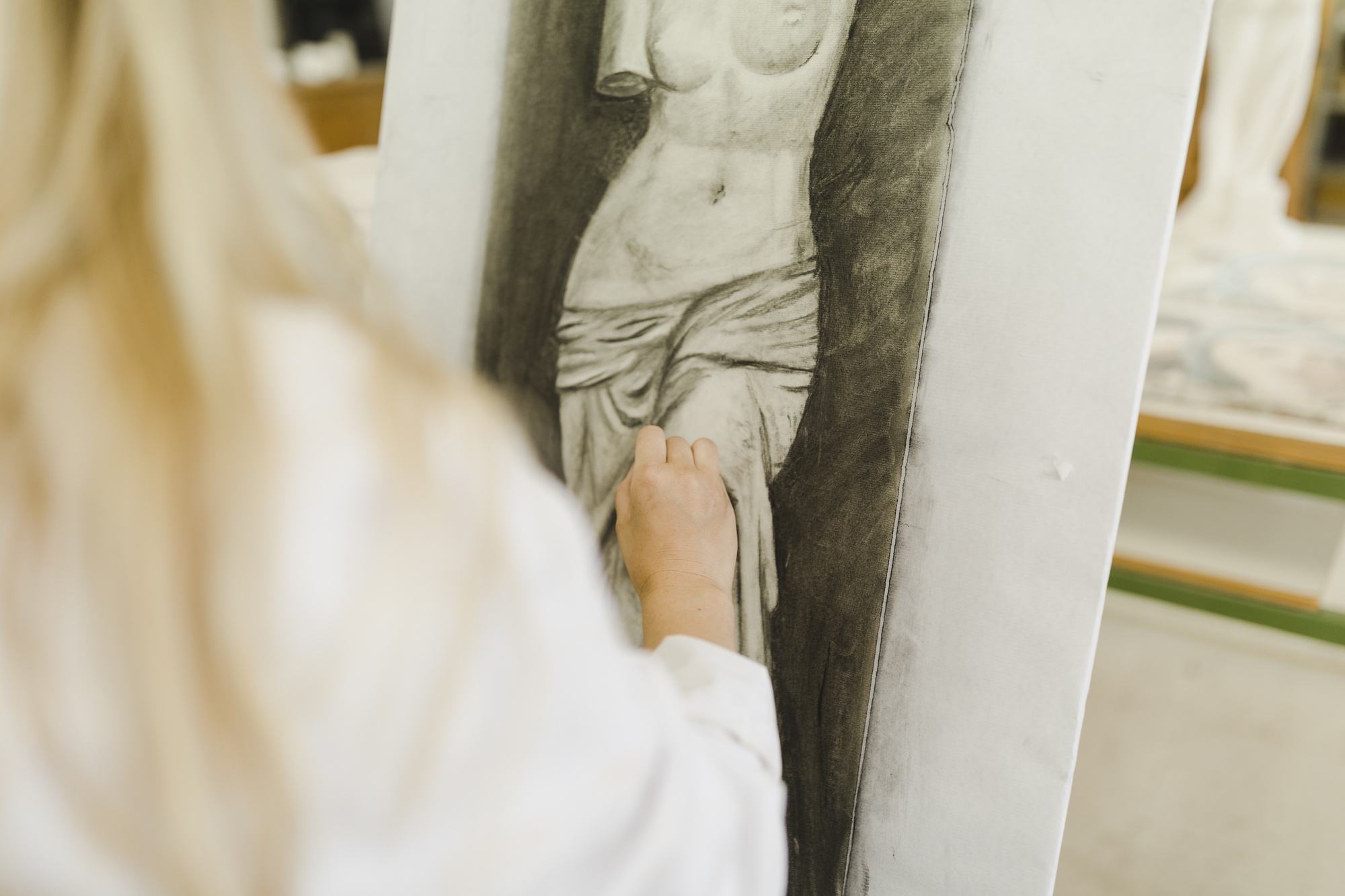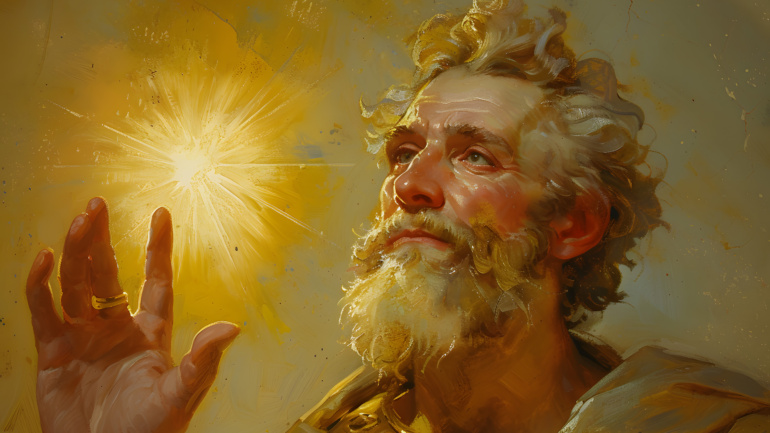Mannerism: A Unique Path to Establish Presence in Art History
- Mannerism is a short but impactful period in art history. The key characteristic of Mannerism is its overtly “affected” nature, highly decorative, and filled with an artificial, contrived feel. Mannerism was not only seen in painting but also in European sculpture, architecture, and other forms of art. This style, which reflects an exaggerated fullness in artistic expression, has left us with many strange and unique works of art.
- Mannerism emerged around 1520 and lasted until 1600, situated between the Renaissance and Baroque periods. Its essence lies in excessive embellishment, often to the point of disregarding reality. This contrasts sharply with the Renaissance’s focus on precision and scientific accuracy. During the high Renaissance, classical art reached its perfect peak, and later artists found it challenging to surpass the masterpieces of their predecessors within the existing framework. With limited room for creativity, artists sought alternative paths, creating art beyond the established norms, thus leaving their distinct mark in art history and establishing their own “presence.”
- Pontormo (Jacopo da Pontormo) is one of the representative painters of Mannerism. He was a Florentine artist and studied under Leonardo da Vinci in his youth. In his paintings, the most noticeable aspect of his Mannerism is the use of color. In his famous work The Deposition from the Cross, the colors are bright and very pastel-like, completely defying the traditional color palette of the Renaissance. Pontormo blended thick oil paints to create watercolor-like tones, depicting surreal, imagined colors. His exaggerated use of color became a hallmark, making it easy to identify his works by this distinctive feature.
- Bronzino, a student of Pontormo, exemplified Mannerism through grotesque distortion of themes in painting. His masterpiece The Triumph of Venus immediately strikes the viewer as bizarre and exaggerated. In the painting, Venus holds a golden apple, while her son Cupid touches her breast and seems about to kiss her. The entire composition is chaotic, mixing various elements with awkward poses that give the figures a strange and uncomfortable look. However, one must admit that Bronzino’s technical skill is extraordinary, especially in his shading and the arrangement of figures, showcasing his mastery of the Renaissance tradition.
- Bronzino was also renowned for his portraiture, and many nobles and court figures sought him out for portraits. His common stylistic trait is the portrayal of cold, distant figures. The characters in his portraits are often pale-faced, with indifferent expressions. While they exude nobility, they also appear icy, creating a sense of detachment.
- Romano was Raphael’s “direct disciple.” When Raphael passed away prematurely, Romano completed the Battle of the Milvian Bridge in the Constantine Hall, following Raphael’s designs. After completing this work, Romano gained significant fame and became one of the leading artists of the time.
- Romano’s representative work is the dome painting The Fall of the Giants, which utilizes the natural depth of a hemispherical dome to extend the extreme angles of Mantegna’s style. The painting portrays the myth of how Zeus overthrew his father and became the ruler of the gods. The artwork spans the entire dome and extends into the corners of the room. Romano can be considered a leading figure in Mannerism for inventing the “360-degree immersive viewing experience.”
- Parmigianino, known as “Little Raphael,” was a prodigy in his youth and was expected to succeed Raphael. However, he faced misfortune during the “Sack of Rome,” when Romans were displaced, and culture and art suffered a great blow. Parmigianino returned to his hometown, and his personal development was significantly hindered.
- Parmigianino’s expression of Mannerism can be seen in the unnaturally elongated bodies in his paintings. His iconic work Madonna with the Long Neck shows the Virgin Mary with an extraordinarily long neck, torso, and fingers, all out of proportion to the human body. Even the infant Christ she holds is disproportionately elongated, straying far from the usual depiction of an infant.
- Although Mannerism was brief and did not achieve the same grandeur as the high Renaissance, it represents an important moment in art history. It reflects how artists moved beyond technical mastery and surpassed the goal of merely emulating the great masters, seeking instead to develop more distinct and bold artistic expressions. This shows a deeper understanding and evolution of their approach to art.

Pontormo – The Deposition from the Cross: The colors in the painting are bright and very pastel-like.
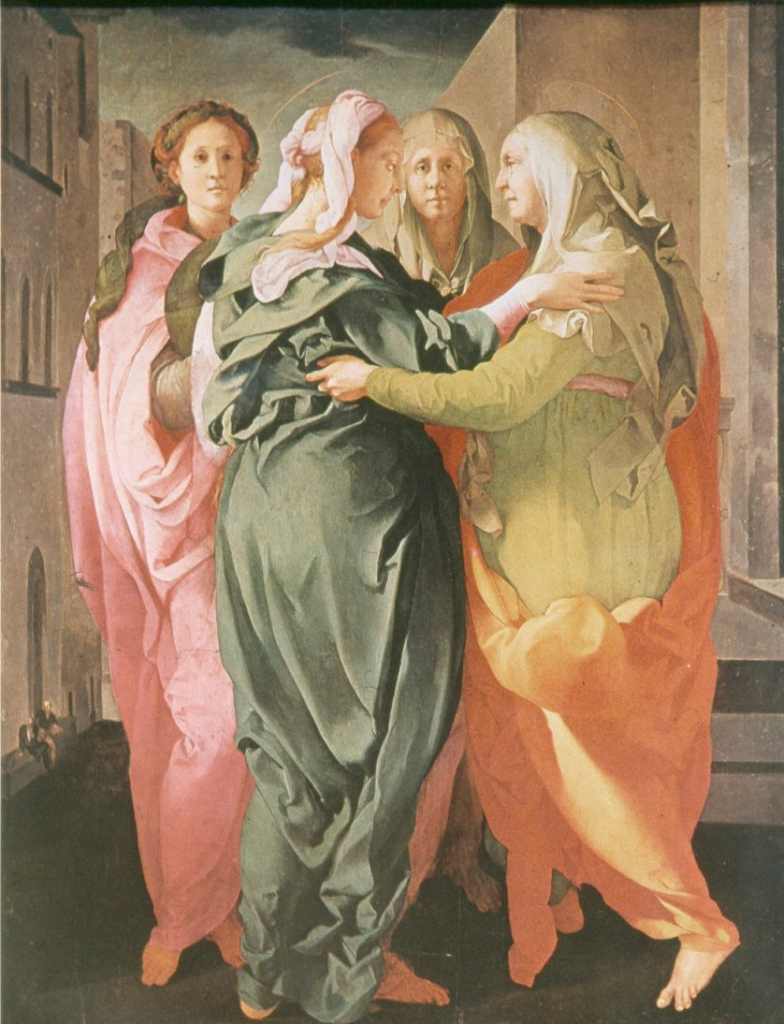
Pontormo – The Virgin and Elizabeth: Dense oil paints are mixed to create watercolor-like hues.
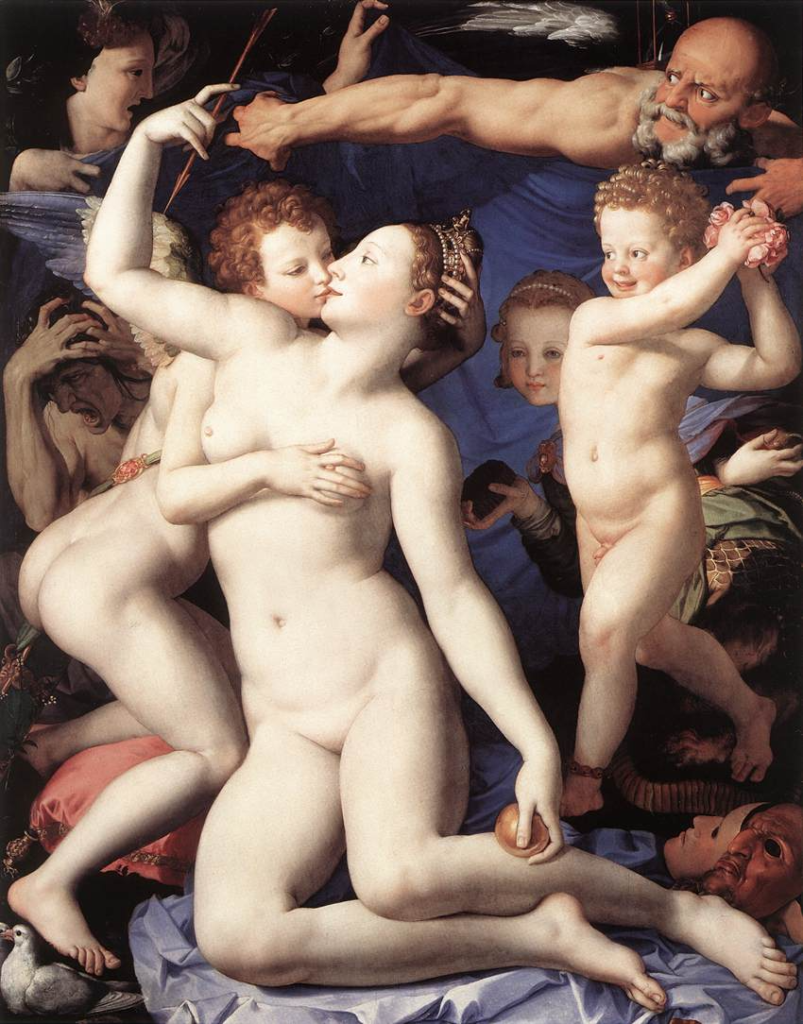
Bronzino – The Triumph of Venus: The composition is complex and chaotic, blending various elements, with odd poses that make the figures appear awkward.

Bronzino – Portrait of a Mother and Child: The figures in the painting have pale faces, and while they appear noble, their expressions are cold and indifferent.
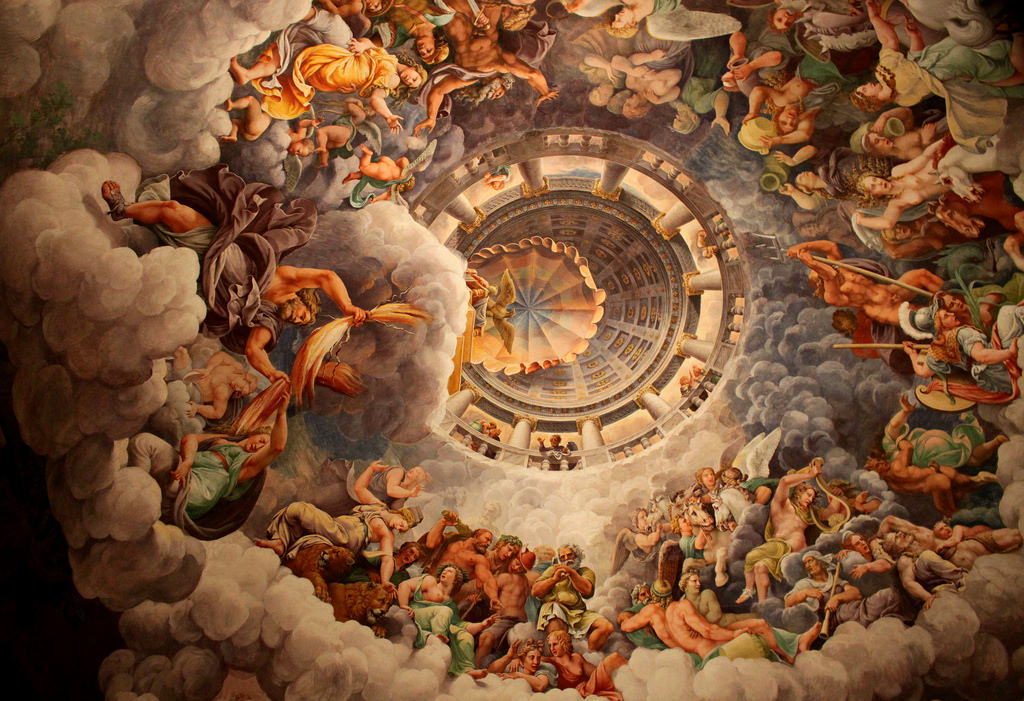
Romano – The Fall of the Giants (Dome Section): The hemispherical dome’s natural depth is used to enhance the extreme angles of the painting.
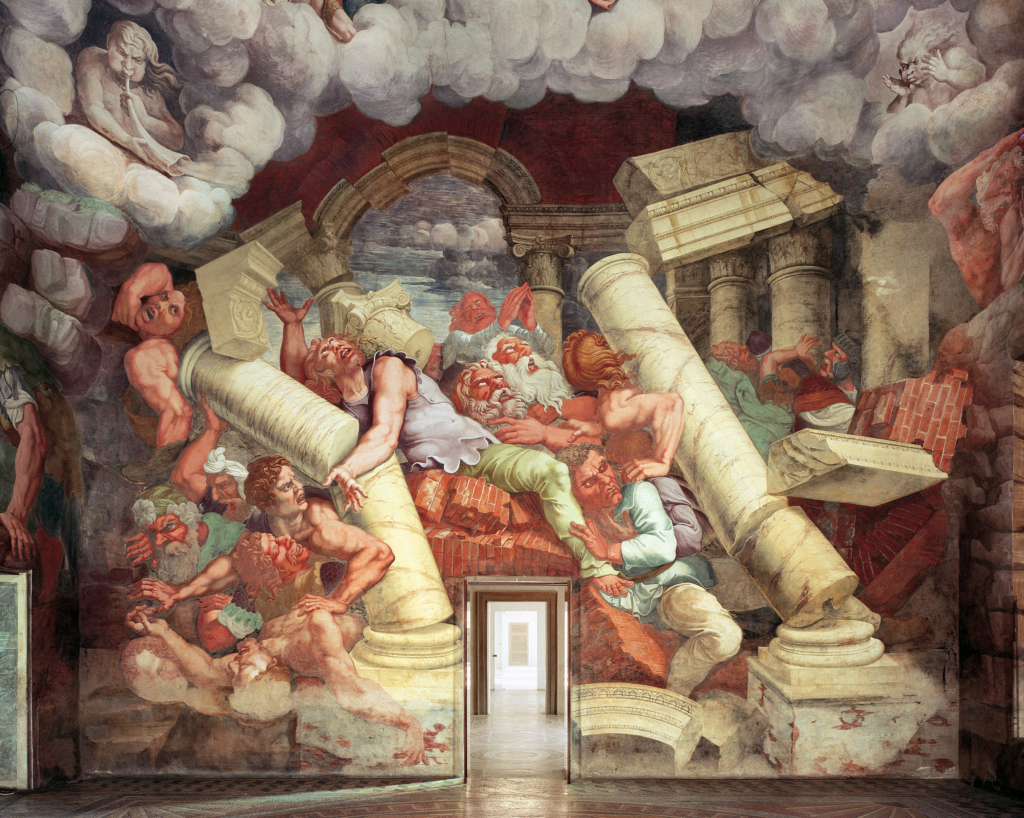
Romano – The Fall of the Giants (Wall Section): The painting extends to the corners of the room, creating a “360-degree immersive” viewing effect.
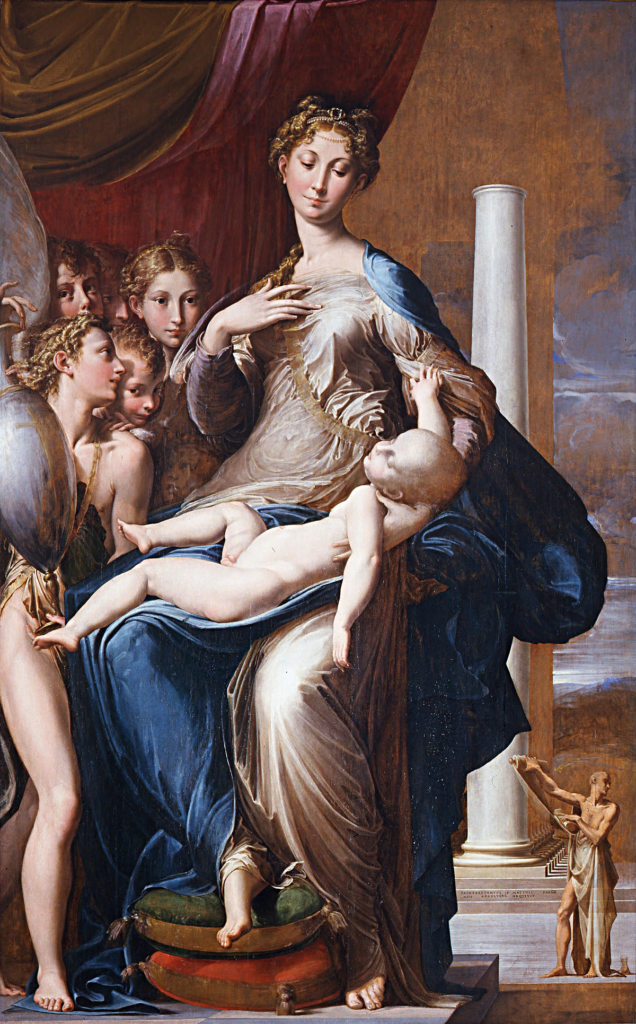
Parmigianino – Madonna with the Long Neck: The figures in the painting have limbs and proportions that are unnaturally elongated.
